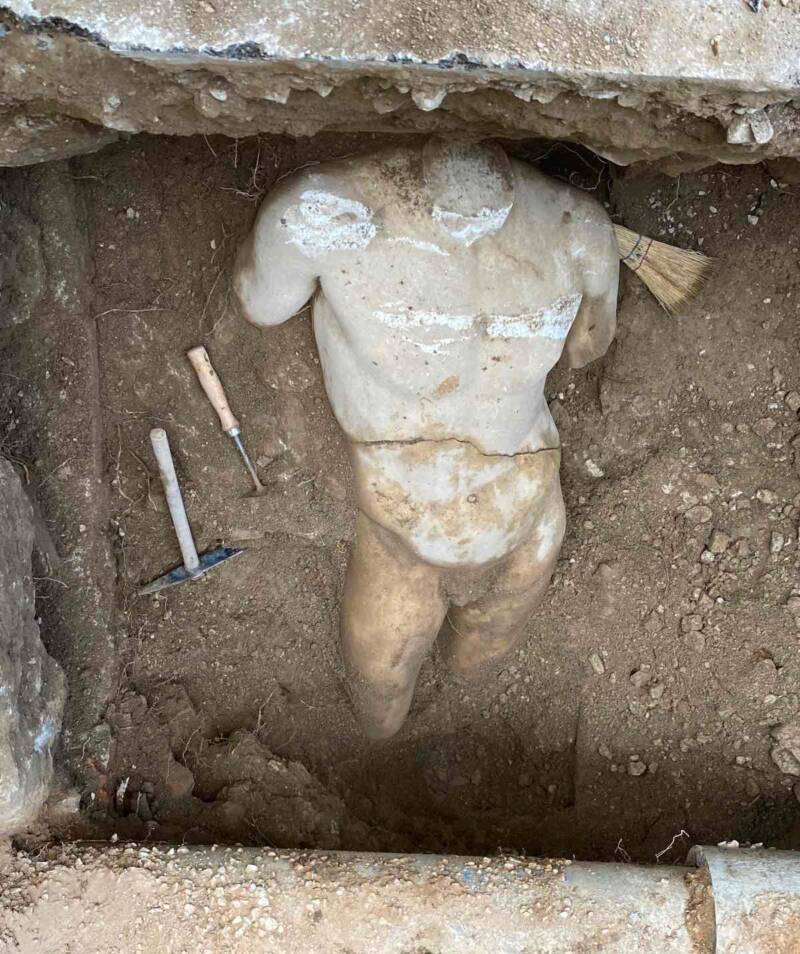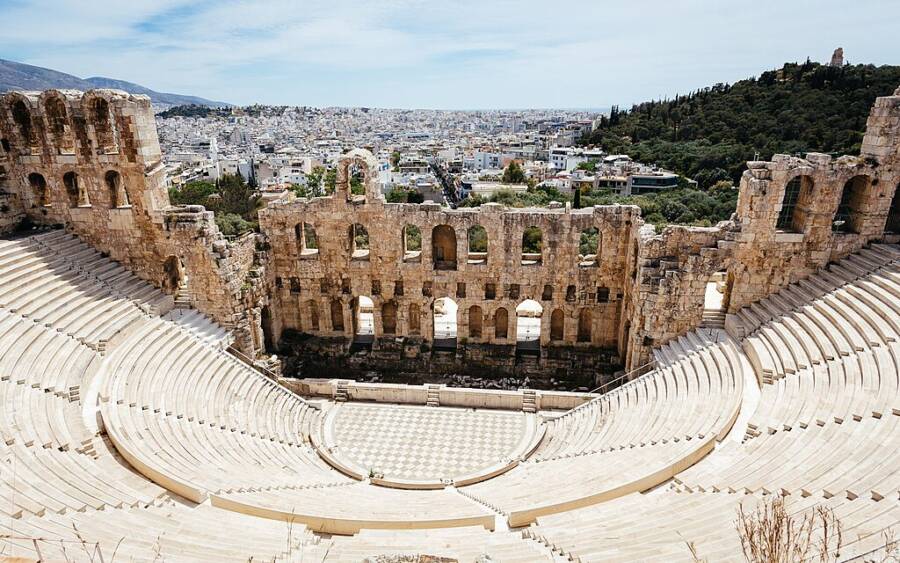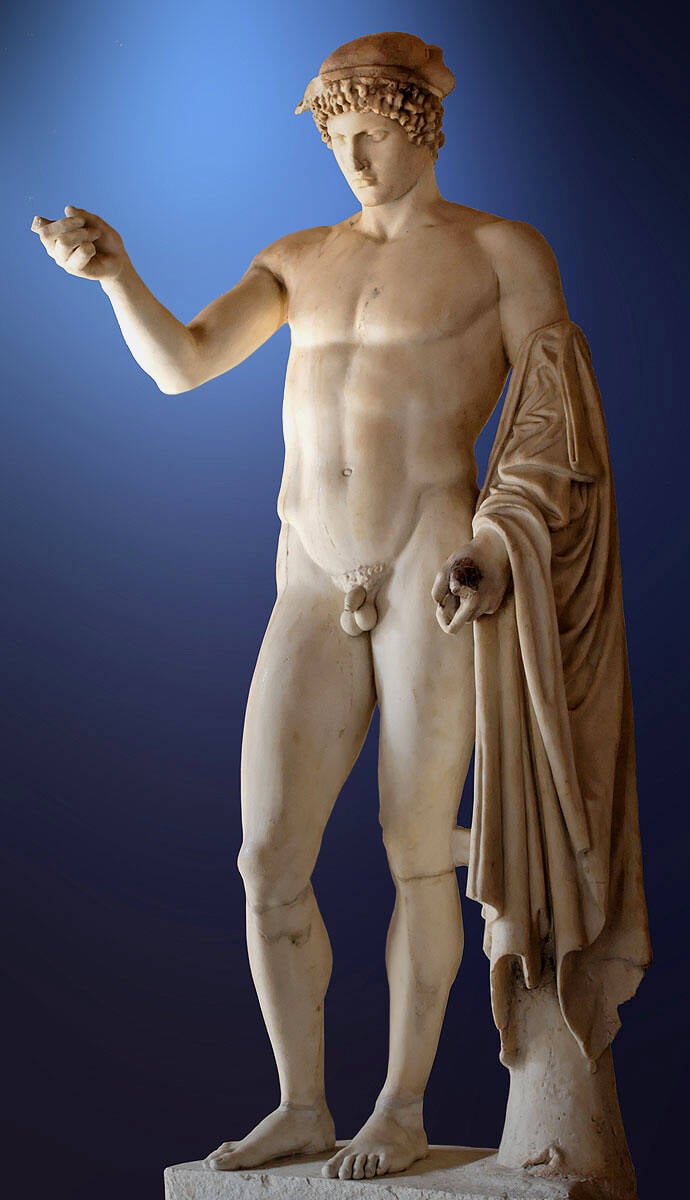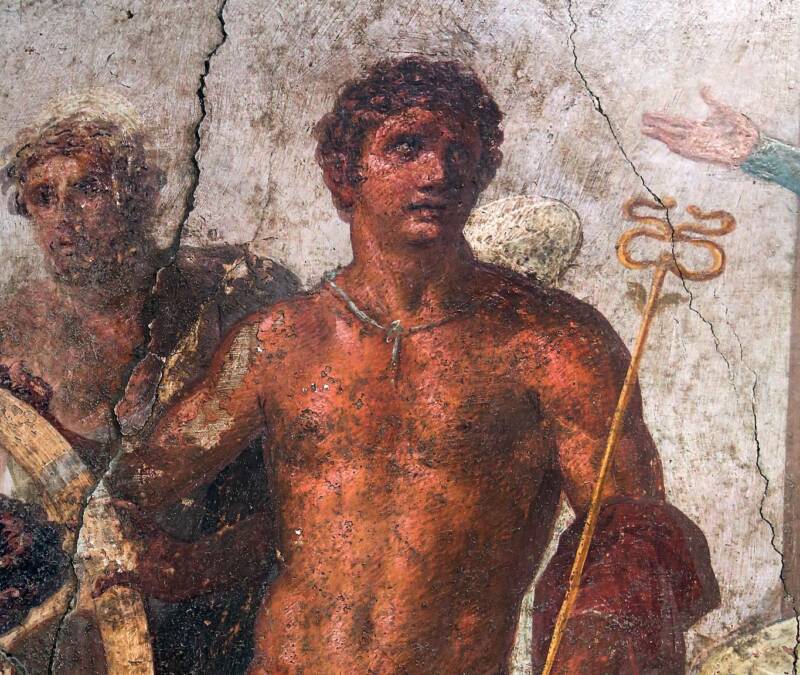Believed to depict the Greek messenger god, the statue was uncovered by accident just south of the Acropolis in Athens, near the 1,863-year-old Odeon of Herodes Atticus theater that's still in use today.

Greek Ministry of CultureThe presumed Hermes Ludovisi statue that was discovered near the Acropolis in Athens.
Gas workers preparing to lay pipes near the Odeon of Herodes Atticus — an ancient theater in Athens, Greece — made a shocking discovery at the foot of the Acropolis. After digging a ditch, they came across an ancient marble statue of a naked man, believed to be a depiction of the Greek god Hermes in a style known as Hermes Ludovisi.
According to experts from the Ministry of Culture, the statue was in “quite good condition” and found “inside a structure built with rectangular bricks” among “villas built by rich bourgeois in that era.” Other objects were discovered at the site as well, but archaeologists have yet to identify them all.
The Discovery Of The Possible Hermes Statue Near The Acropolis
On December 9, 2024, workers began digging a ditch to install pipes to supply natural gas in the neighborhood near the Acropolis. To their surprise, they unearthed an ancient marble statue and several other artifacts from the ancient Roman era.
According to the Greek Reporter, the southern side of the Acropolis was once a district of luxurious private residences and villas in the Roman era, roughly between the first and fifth centuries C.E. The implication is that the probable Hermes Ludovisi statue may have been part of one such building.

Wikimedia CommonsAt more than 1,850 years old, the Odeon of Herodes Atticus is still in use today.
“In this area, to the south of the Acropolis, during imperial times between the 1st and 5th centuries [C.E.], some of the most splendid urban mansions of Athens were built. These edifices are evidence of a city that was an object of admiration and attraction for wealthy and well-educated citizens,” the Ministry said. “Their residences were richly decorated with mosaic floors and sculptures, which were works from famous Neo-Attic workshops.”
Experts from the Ephorate of Antiquities completed documentation of the discovery and are planning to transport it to a conservation laboratory in Athens.
What Is A Hermes Ludovisi Statue?

Wikimedia CommonsThe restored Hermes Ludovisi statue in the Palazzo Altemps.
Hermes Ludovisi is a specific marble statue representing Hermes, the Greek messenger god, in his role as Psychopompus — the guide of souls to the underworld. This Roman-era sculpture, dating from the late 1st to early 2nd century C.E., is believed to be a copy of a 5th-century B.C.E. Greek original, possibly crafted by the renowned sculptor Phidias or an artist from his school.
In this portrayal, Hermes is depicted as youthful and beardless, a departure from earlier representations that often showed him as older and bearded. He dons a petasos, a traveler’s hat, to emphasize his role as a divine messenger and traveler. The statue shows Hermes with a contemplative and somber expression, with his right arm raised in a gesture that suggests eloquence or farewell, and his left hand originally holding the caduceus, his herald’s staff entwined with two serpents.

Wikimedia CommonsA fresco of Hermes, messenger of the gods, from Pompeii.
The name Hermes Ludovisi originates from its association with the Ludovisi family, prominent Roman nobles. Cardinal Ludovico Ludovisi acquired the statue in the 17th century, and it became a notable piece in the Ludovisi collection.
In 1631, the sculptor Alessandro Algardi restored the statue, adding elements such as the right arm, parts of the feet, the tip of the nose, and attributes like the petasos’ brim and wings, a small bag in the left hand, and the caduceus in the right. These additions were later removed to preserve the statue’s original authenticity.
Currently, the Hermes Ludovisi is housed in the Palazzo Altemps, part of the National Roman Museum in Rome. This museum showcases an extensive collection of classical sculptures, with the Hermes Ludovisi being one of its most distinguished exhibits.
After reading about the discovery of this Hermes statue in Athens, learn all about the Statue of Zeus at Olympia, one of the Seven Wonders of the Ancient World. Then, learn about the majestic rise and devastating fall of the Colossus of Rhodes.





